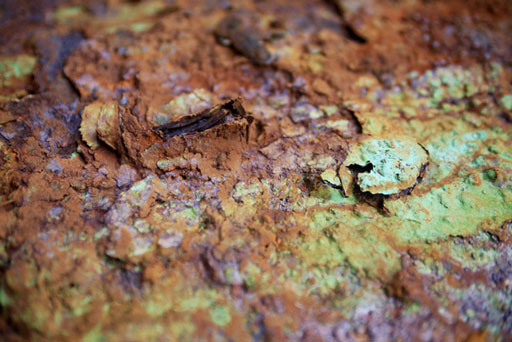Numerous items may be required to be kept in storage for many years. It is essential that proper methods of storage and preservation be applied so that items do not deteriorate, lose some of their properties, and/or become unusable.
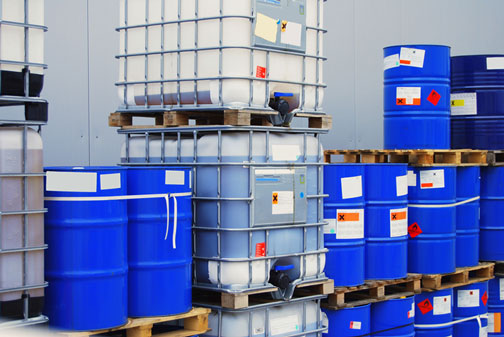
What is Preservation?
By definition, preservation is the act of keeping materials intact and free from decay for later use. There are many factors to consider with regard to preservation:
- Where will the materials be stored?
- What is the climate inside of the building, or container, and outside of the building?
- What pests will be attracted by the materials stored?
- How long will the materials be stored?
- What other materials will be stored at this location?
- How often should the materials be inspected?
- What is the cost of preserving these materials? Is it cheaper to order or create more than it is to preserve?
- What laws and regulations do local, state, and federal governments impose on the materials stored?
Major Factors Influencing Deterioration
The materials to be discussed are made of particular resources with specific characteristics. With the passage of time (and sometimes due to unfavorable storage conditions), those characteristics tend to change or deviate from their original properties, making them unfit for use. This change in characteristics of stored material from their original state is referred to as deterioration. Due to deterioration, materials may not be able to fulfill intended functions. Proper storage conditions, preservation treatments, and proper packaging considerably reduces the rate of deterioration. The agents that cause deterioration may be broadly classified as biological and non-biological.
Biological Agents
Damages are caused to stored materials by organism such as ants, mildews, rats, etc. These are living organisms, and this type of deterioration is referred to as biological damage. Items like wood products and other building materials are prone to loss by these agents of deterioration.
Non-Biological Agents
Non-biological agents cause various types of damage. Common types of non-biological damage to materials include: corrosion, rusting of metal materials, delamination of composite materials, warping, and hardening of rubber.
Corrosion
Corrosion relates to deterioration of metal surfaces due to reasons other than mechanical ones.
Corrosion is usually caused when one or more of the following conditions prevails:
- When materials are exposed to harmful gases.
- When materials are in continuous contact with water in the presence of air.
When materials are exposed to solutions of acids, alkalis or salts.
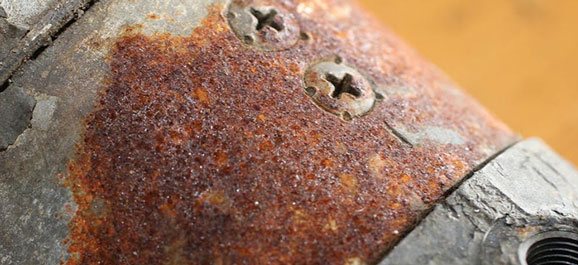
Rust
Rust is formed by the oxidation of iron in the presence of moisture. The term “rust” is restricted to iron and steel only, while the term “corrosion” applies to all metals.
Temperature
Temperature may be extremely low, high, or optimal for the growth of microorganisms and insects.
Freezing can result in the bursting of containers filled with aqueous materials due to expansion. Rubber, certain polymers, and metals become brittle at low temperatures. At high temperatures, aging and chemical changes, like oxidation, become rapid and particularly detrimental to rubbers. High temperatures may also impose strain on the containers.
Diurnal changes in temperature may induce stress due to differential expansion and result in failure of stores where two or more materials are used. Diurnal changes in temperature may also result in dew formation and subsequent corrosion and fungus.
Dew formation can result in the failure of electrical/electronic equipment.
Light
The effects of light alone, or in the presence of oxygen, can be quite marked on chemicals and photosensitive materials/polymers. They may form explosive peroxides or result in free radicals, leading to degradation.
Moisture
Loss of moisture may change the characteristics of the stored material and reduce its serviceability (i.e. leather goods, abrasive papers/clothes etc.). An increase in moisture may cause corrosion of metallic parts, encourage biological/chemical deterioration, and cause a loss of insulation of electrical/electronic instruments/equipment.
Oxygen and Ozone
Oxygen and ozone cause oxidation and degradation in many compounds. These reactions are accelerated in the presence of moisture and light.
Environment Generated Interaction
Some types of environment generated interactions include:
- Impact
- Vibration
- Compression
- Tension and tearing
- Gases and vapors
- Chemical pollution
- Electromagnetic radiation
- Static electricity
Cleaning and Preserving
Metal materials are prone to rust and corrosion damage, as well as electrical damage due to the conductive nature of metal.
Preservation
Applying a preservative to the metal’s surface creates a barrier between the atmosphere and the metal, preventing corrosion damage. Before a preservative is applied, the metal surface must be cleaned and free from grease. The surface should be de-rusted, if it is already corroded, and completely dry.
Cleaning and Degreasing
Washing with water, scrubbing with rags, or rubbing with sand paper or emery cloth are all ways to clean and degrease metal materials. Cleaning and degreasing may also be done by chemical methods such as:
- Dissolving the grease in chemicals such as carbon tetrachloride, kerosene oil, or white spirit.
- Immersion of dirty and greasy articles in a solution of caustic soda or soda ash.
However, before the above cleaning methods are employed, the rust and scales must first be removed by mechanical methods such as rubbing with emery cloth/paper or steel wire brush. Kerosene oil may be used to loosen rust.
After the material has been cleaned and made rust free, it should be thoroughly dried by one of following methods before a preservative coating is applied.
- Blowing hot air
- Blowing dry compressed air
- Wiping with clean rags
If none of the above methods are possible, it may be dried in sunlight.
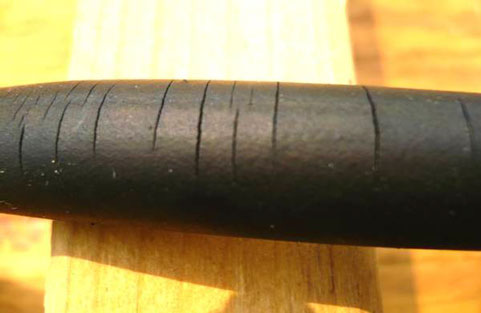
The cleaning of materials made from timber, leather, rubber, textiles, and plastic generally entails nothing more than removing dust by the most suitable, available means (i.e. brushes, clean rags, air blower, and vacuum cleaners).
Preservative Coating
Metals, other than iron and steel, do not normally require any protective coating. In the event they are to be kept under corrosive conditions for long periods, they should be given a protective coating of mineral jelly, beeswax, or grease and then wrapped in grease resistant paper. Before a preservative method is to be adopted and applied, it should be first determined if the protection to be given is for the short term or long term.
When using the preservative coatings of mineral oils, greases, and mineral jellies, the cost of the preservatives is to be given due consideration unless the value of the materials demand the most stringent protection. If the materials are very large, even waste oil could be explored for re-use.
After application of the preservative, the metal materials should be wrapped in grease resistant paper or covered with tarpaulin. Some methods for long-term protection are:
- Painting
- Volatile Corrosion Inhibitors (VCIs)
- Desiccants
- Strippable coatings
Storage
Proper storage is necessary, regarding the preservation of materials and products.
Cleanliness
All material storage rooms should be swept daily and have cobwebs removed. Cracks and crevices must be filled up and repaired. If possible, sawdust or a comparable drying/absorbing agent should be spread over the floor before sweeping. These materials absorb excess moisture and prevent the spreading of dirt and dust into the air and subsequently accumulating on the storage racks and materials lying on them.
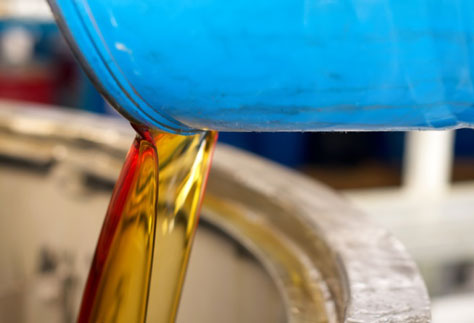
Note that oils, greases, or other materials absorbed by the sawdust or absorbent material may require that it be handled, stored, and disposed of as a hazardous material.
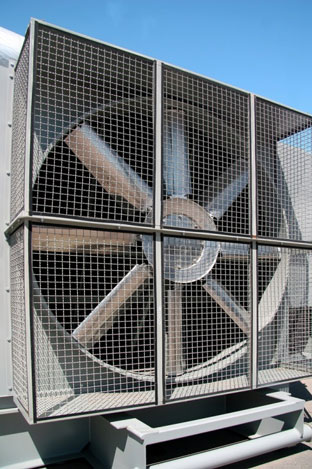
Ventilation
Air must be allowed to circulate freely throughout the storage area. The only exception is with rubber materials where ventilation has to be restricted to a slower, more natural circulation of air. Free aeration helps keep the materials and storage rooms dry, and prevents accumulation of heat within the materials. However, the local climate needs to be considered, as an exceedingly humid climate would bring in too much moisture.
Segregation of Materials
Once the damage is noticed, materials damaged by biological agents should be immediately segregated from non-damaged materials, and then given the appropriate treatment to remove the biological agents.
Segregation and Handling of Petroleum Products
Deterioration of petroleum products may occur due to limited shelf life, carelessness in handling, and/or bad storage conditions.
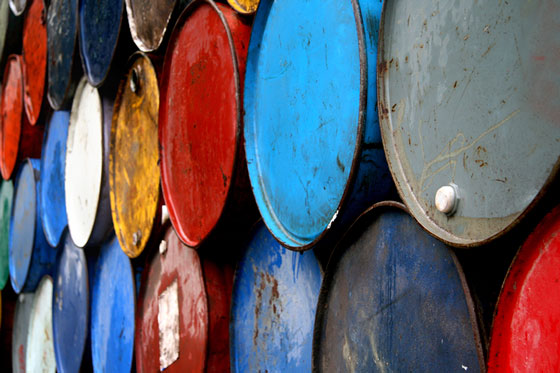
Some Causes of Deterioration
Some causes of deterioration include:
- Evaporative losses
- Contamination
- Exposure to atmospheric conditions (oxygen, temperature, and light)
- Growth of microorganisms
Evaporative (Vapor) Losses
- Accumulated vapors may be lost due to container breathing, which is caused by expansion and contraction from daily temperature variations (day and night)
- Vapor may also be lost by suction that is created by winds when tanks are not airtight
- Evaporation increases with a rise in temperature, increased vapor space, surface area, and a decrease in humidity of air
Evaporative (Vapor) Loss Prevention
A certain amount of evaporation of petroleum products is unavoidable, particularly in hot climates, but can be reduced by:
- Proper storage
- Adequate maintenance of pressure and vacuum valves
- Attention to closure and joints for vapor leakage
- Turnover of stock in strict rotation (first in, first out, or FIFO)
- Keeping the tanks as full as possible to reduce vapor space
- Heat deflection paints to control high temperatures
Keeping these materials under cover and ensuring airtight closures can reduce evaporation of packed products.
Contamination
Contamination in petroleum products may be due to:
- Mixing up various grades
- Contamination with water
- Contamination with dirt, dust, grit, rust and corrosive substances
Contamination Prevention
To prevent mixture with other grades, pipeline equipment shall always be marked correctly.
The presence of water in bulk fuel is inevitable through condensation of atmospheric moisture, drawn in during the normal breathing of the tanks. This is removed by wicking and/or draining off water from the bottom of the tanks as oil floats on water.
Access of these contaminations can further be controlled using rust-free equipment, which is properly closed and covered in an appropriate location in the main storage, and adequate filters in filling points.
Exposure to Oxygen, High Temperatures, and Light
Exposure to atmosphere leads to oxidation. High temperatures and light accelerate the oxidation process.
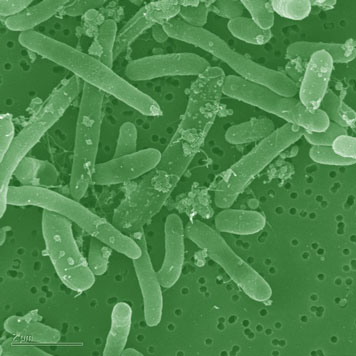
Growth of Microorganisms
Hydrocarbons in the presence of water represent the source of a key nutrient for the growth of microorganisms, which appear in the form of bacteria and fungi.
Effect of Environment
The performance of electrical equipment and components is affected by climatic hazards such as humidity, temperature, dust, corrosion, etc.
Transformers
Transformers are acutely affected by moisture and dust. Insulation breakdown can result in a severe short circuit. The dirt accumulation on high voltage bushings can result in discoloring of connections, and excessive heat may cause a flashover at high voltage terminals. Low temperature can affect the moisture seals, resulting in cracks.
Motor/Generators
The greatest cause of failure for motors and generators is the breakdown of insulation. This can be caused by absorption of moisture, oil, grease, and dust in the winding, as well as excessive heat, vibration, over-voltage, and aging.
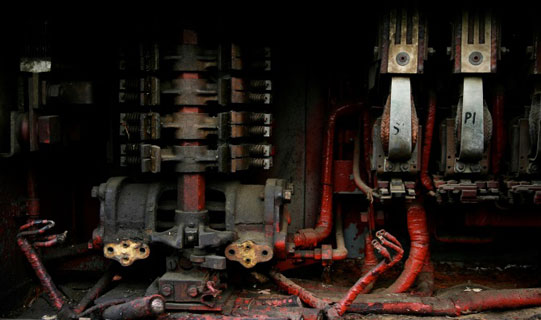
Relays
Atmospheric corrosion can cause an electrochemical action on fine wires of the relay coil, resulting in an open circuit of the coil. Failure of contact occurs in unsealed relays due to dust and moisture.
Switches
If left unused, the metallic parts of switches get corroded, resulting in poor contact/break. Undesirable contact can also occur due to accumulation of dust.
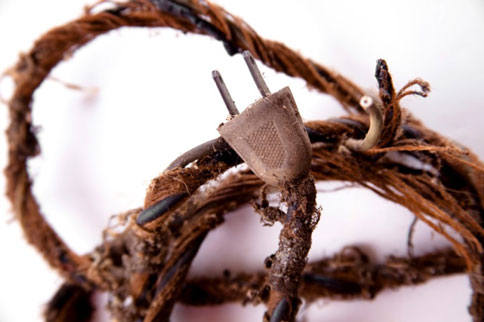
Plugs, Sockets and Connectors
The metallic parts of plugs, sockets, connectors, control knobs, adapters, etc. get corroded, sometimes severely.
Care and Preservation
- Electrical motors and equipment must be stored under covered accommodations so as to protect them from atmospheric conditions. Windings must be protected from humidity.
- Mechanical vibration and shocks are eliminated by providing suitable vibration and shock mounds.
- Dust and salt mixed with moisture will rapidly start corrosion, in addition to increased leakage and growth of fungus. Therefore, these must be removed from the surface of the equipment.
To learn more about Preservation, stop by our Industrial Wiki and also be sure to check out our free Module of the Month, Preventive Maintenance, both available through the new odesie® site at www.myodesie.com


